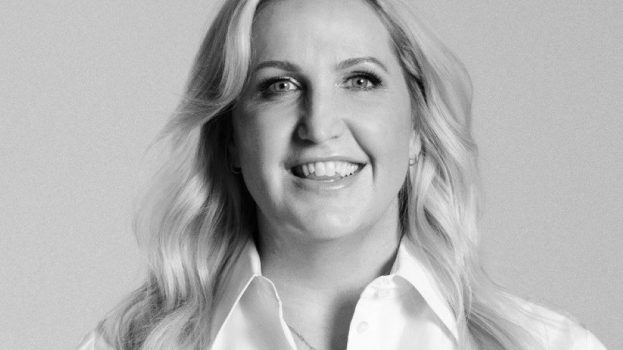It’s that special time of year – post-Cannes, pre-Fall TV – when things are in transition, and theories of where the industry is headed abound as folks wind down a bit in advance of a new cycle of freneticism.
As our cover suggests, specialty channels are faring well right now, both financially (thanks to dual revenue streams) and in terms of audience and ad market share gains. According to BBM statistics, total TV viewing in Canada from Sept. 2008 to May 2009 was 37% specialty and 55% conventional. Back when they launched, this outcome was by no means assured, and I believe a lot of credit is due to the power of branding. These are channels which had to rely on attitude and environment to establish a coherent identity in their niches, rather than the sheer draw of must-see prime-time drama.
And it’s paid off as a strategy. The recently released StatsCan Television Broadcasting Report for 2008 found specialty television led the sector with revenues of $2.3 billion in 2008, ousting conventional from the top spot, according to stats for the fiscal year ending Aug. 31 (before the downturn of late 2008). Specialty revenues were up by 6.5% thanks to a rise in both subscription revenues (5.4%) and advertising revenues (8.1%). In an interview for our Fall TV report this issue, M2 Universal president Sara Hill said migration of ad dollars to specialty is due both to the rise in share of tuning for specialty and the ease of sponsorship integration. ‘Some advertisers now use a mix of 100% specialty,’ says Hill.
Specialty has also been able to research and respond to very specific demo tastes, which ultimately led Corus to transform Scream to a broader (and more female-friendly) Dusk channel (see p. 22).
That focus on the consumer’s needs to create a unique and consistent environment, and 24/7 delivery and refinement of that experience, is also what’s resonating for non-TV brands now.
I went to Cannes expecting to see the future of advertising revealed and to experience that ‘aha!’ moment when all the marketing theories, media trends and audience issues neatly wrap themselves up into a handy dandy solution that makes sense of it all. What I found was some really big ideas that were truly unique to the brand challenge, and as a result, so well activated across channels that many juries claimed them for their own discipline. Like Tourism Queensland’s ‘Best Job in the World’ campaign, which won both the PR and Cyber Grand Prix, as well as Gold in Media and two PR Lions.
It seems the best advertising in the world transcends categories and defies labelling – and flows out into the universe in many forms to ultimately be adopted by its audience. For instance, with a small budget, Cumminsnitro, Brisbane, created the ‘Best Job in the World’ contest, ostensibly to find a new island caretaker. The ‘Job Listing’ ads triggered a groundswell of interest in the dream position, attracting video applications from all over the world, and ongoing global coverage of the contest garnered millions of free PR impressions from major media.
Judges on most juries I spoke to said there was much lively debate as to where the idea came from to determine if a campaign was Lion-worthy in their category. U.S. PR juror Carol Cone, chair and founder of the Omnicom strategy and communications agency Cone, explained the blurring thusly: ‘Digital is the great destructor of the lines. The consumer’s voice is activated by digital – ‘I’ll tell you about your brand.”
GWP Brand Engineering here in Toronto recently decided to restructure around the notion of ‘post-digital,’ and brought Tim Lambertus on board as director of interactive branding and technology. When asked to explain GWP’s post-digital focus, chair & CEO Bruce Philp elaborates: ‘We now have to assume that consumers will find a brand in the manner of their own choosing, and that every point of contact has to both stand on its own and usefully direct them through the rest of the brand experience. ‘Post-digital’ means managing a brand as though it was running for election, where there is no lead message, no anchor medium, no default media aperture, and the environment is permanently dynamic. Instead, there is a platform, there is character, there is a strategy for what needs to be said at every point of contact and there is a mechanism for listening to what the audience is saying in response.’
One of the Lions-winning campaigns that blurred category lines and had perhaps the most significant results stories was Droga5 New York’s ‘The Great Schlep,’ and curiously, it was one of two election campaigns that won Lions, the other being the Obama campaign itself, which won both Titanium and Integrated Grand Prix for its brave social pioneering. ‘Schlep’ won a Gold Lion in Cyber and Direct and also won a Titanium and PR Lion for its work with Sarah Silverman, and arguably was the tipping point in the U.S. election.
It’s perhaps the poster child for the kind of inspirational campaign people look to Cannes to identify. The Droga5 election effort was truly unique, and not in just a ‘first-ever’ way, but uniquely strategic for the task at hand, which was to deal with the Democrats’ historic problems in Florida. The solution – finding a celebrity spokesperson to enlist grandkids to rally their Jewish grandparents to vote Obama (which was a large enough voting block in Florida to swing the tally in his favour) – is the kind of big idea that then dictates how it will make its way out into the world, and lets the world take over the media plan.
Cone described ‘The Great Schlep’ as ‘a brilliant mobilization of a group that could influence the outcome,’ adding that the ‘metrics were wonderful.’ The win in Florida’s margin correlated to the group they’d targeted.
Seems the new grail is ideas that transcend campaigns, and take on electioneering-style all-encompassing persuasive pervasiveness. It’s not enough to just get your brand noticed, now you need to be convincing enough to swing votes.
We’re looking for those kinds of stories here in Canada. Strategy’s B!G awards celebrate ideas above and beyond creative advertising. Since B!G wants to reward the truly significant agency/brand hookups in realms beyond advertising, the brands that are eligible are those with the wherewithal to outsource projects anywhere they desire. Agencies (and/or brands) are invited to submit case studies that chronicle such unique partnerships, and the B!G brand criteria is media budgets of over $20 million (overall – at the parent-co level), and whose business results in $2 million in revenue for the agency (again, at the parent-co level). The submission period is August 4 to 10, so get on that.
Speaking of big ideas, strategy has finished our gruelling poll of Canada’s top marketers and agency execs on the work of their peers, and can now reveal the shortlists for Agency of the Year and Media Agency of the Year. Please simulate your own drum roll, then read on…
The 2009 AOY shortlist:
BBDO
Bleublancrouge
DDB
John St.
Leo Burnett
Lowe Roche
Ogilvy
Rethink
Sid Lee
Taxi
TBWAVancouver
Zig
The 2009 MAOY shortlist:
Carat
Cossette
Initiative
M2 Universal
Mediacom
Mediaedge:cia
Media Experts
Mindshare
OMD
PHD
Starcom MediaVest Group
ZenithOptimedia
The AOY contenders will see their best five campaigns adjudicated by a panel of marketing and agency peers for strategic and creative strengths, as well as outcomes, as will the top three plans submitted by the MAOY competitors and all the B!G cases. The winners will be announced at the strategy Agency of the Year awards show this fall. Good luck to all!
Cheers, mm
Mary Maddever, exec editor, strategy, Media in Canada and stimulant
P.S. For B!G submission instructions contact special reports editor Carey Toane at (416) 408-2300 ext. 227 or ctoane@brunico.com.























